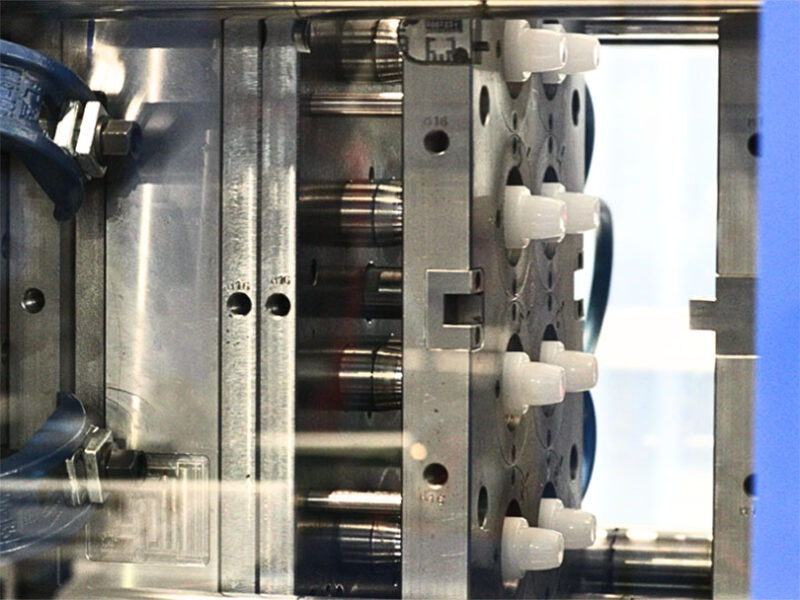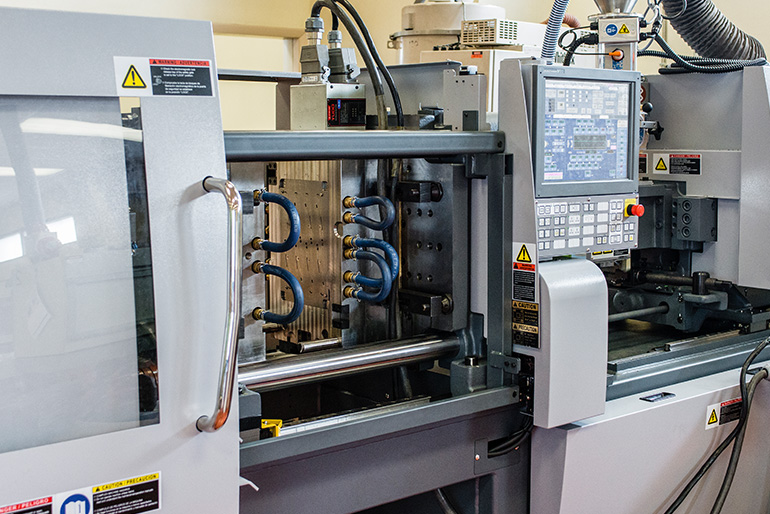Plastic Injection Molding: A Comprehensive Guide to Modern Manufacturing Techniques
Plastic Injection Molding: A Comprehensive Guide to Modern Manufacturing Techniques
Blog Article
Recognizing the Essentials of Plastic Injection Molding Processes
Plastic shot molding serves as a keystone of contemporary manufacturing, offering a methodical approach to producing complex parts with precision. Discovering these important aspects could expose how even small modifications can lead to considerable enhancements in production outcomes, elevating questions concerning the possibility for advancement in this recognized procedure.
What Is Plastic Shot Molding?
Plastic injection molding is an extensively utilized production process that changes thermosetting and thermoplastic products into precise and complex shapes. This strategy is preferred for its ability to generate high volumes of identical get rid of phenomenal accuracy, making it a crucial method in numerous sectors, including automobile, consumer goods, and clinical tools.
The process includes melting the picked plastic material and injecting it right into a mold under high stress. The mold and mildew, developed to the specs of the desired component, enables the molten plastic to form as it cools and solidifies. When the product has hardened, the mold is opened up, and the finished component is expelled.
Plastic injection molding offers several advantages, consisting of decreased waste, consistency in manufacturing, and the capability to integrate detailed designs that may be testing with various other making methods. Additionally, it sustains a wide series of materials, each offering one-of-a-kind properties that can be tailored for particular applications. As markets proceed to introduce, plastic shot molding stays at the forefront, enabling the advancement of advanced products that meet advancing consumer demands.
The Injection Molding Refine
The shot molding procedure is a sophisticated method that entails several crucial phases to generate premium plastic components. At first, plastic pellets are fed right into a heated barrel where they are merged a viscous liquid. This molten plastic is then injected under high pressure into a precision-engineered mold and mildew, which shapes the material into the wanted form.
When the mold and mildew is loaded, the plastic is enabled to cool down and strengthen, taking the shape of the mold and mildew cavity. Cooling time is critical, as it impacts the cycle time and the final buildings of the shaped part. After adequate cooling, the mold and mildew opens up, and the finished part is ejected using ejector pins.

Materials Made Use Of in Shot Molding
Numerous materials can be used in the injection molding process, each offering unique properties that accommodate certain applications. One of the most generally utilized products consist of thermoplastics, thermosetting plastics, and elastomers.

Thermosetting plastics, like epoxy and phenolic resins, go through a chemical adjustment during the treating process, causing a stiff, stringent structure. These materials are suitable for applications requiring high warm you can look here resistance and architectural stability, often utilized in automobile components and electric insulators.
Elastomers, including silicone and rubber-based products, offer versatility and strength. Their special properties make them appropriate for applications that demand elasticity, such as seals and gaskets.
In addition, specialized products like bio-based plastics and composites are acquiring grip for their ecological advantages and boosted performance characteristics, broadening the range of injection molding applications in different markets. Recognizing the residential or commercial properties of these materials is vital for selecting the appropriate type for specific projects.
Benefits of Shot Molding
Injection molding stands apart as an extremely effective manufacturing process that offers numerous benefits for generating intricate get rid of accuracy. One of the most significant advantages is the capacity to create intricate layouts that would certainly be difficult or difficult to achieve with various other approaches (Plastic Injection Molding). The procedure permits tight resistances and detailed attributes, ensuring high-quality parts
Furthermore, shot molding is recognized for its fast production capabilities, making it an ideal choice for high-volume production. Once the mold is developed, parts can be generated swiftly, minimizing view lead times and raising general performance. This performance not only decreases production prices but additionally offers an affordable edge in the market.
The convenience of materials made use of in shot molding even more boosts its charm. A vast array of thermoplastics and thermosetting polymers can be employed, permitting producers to pick materials that ideal satisfy their specific demands, consisting of versatility, heat, and toughness resistance.
Additionally, the procedure minimizes waste, as excess material can often be recycled and recycled. This sustainability facet adds to a lowered environmental impact, making shot molding a basics liable manufacturing choice. Generally, the benefits of injection molding make it a preferred technique for several sectors.
Aspects Influencing Product Top Quality
While various elements can affect item top quality in injection molding, understanding these aspects is vital for attaining optimum results. Key aspects include material option, refining criteria, and mold and mildew layout.
Material choice plays an essential duty, as different polymers display one-of-a-kind homes that impact flowability, strength, and thermal stability. Inadequate product selection can bring about issues such as bending or insufficient filling.
Handling criteria, consisting of temperature level, pressure, and cycle time, have to be meticulously controlled. Variations in these setups can result in inconsistencies in part dimensions and surface finish. Excessively high temperature levels might create deterioration of the polymer, while insufficient stress can result in short shots.
Mold style is equally vital, as it figures out the circulation of the molten plastic and the cooling process. Improperly developed mold and mildews may cause uneven air conditioning rates, causing dimensional mistakes and residual stresses.
Verdict
Finally, plastic injection molding acts as an important manufacturing procedure that enables the effective production of high-quality components. Proficiency of the injection molding procedure, including the understanding of materials and the impact of numerous factors on product high quality, is essential for attaining optimal outcomes. The benefits of this technique, such as cost-effectiveness and design flexibility, more highlight its relevance throughout numerous sectors, strengthening its condition as a preferred selection for high-volume production.
Plastic injection molding serves as a keystone of modern-day manufacturing, giving a systematic method to generating complex components with precision.Plastic shot molding provides a number of benefits, consisting of decreased waste, consistency in production, and the ability to incorporate detailed styles that may be challenging with various other producing techniques (Plastic Injection Molding). As sectors continue to innovate, plastic injection molding remains at the forefront, making it possible for the development of advanced items that meet progressing consumer demands
The injection molding procedure is an advanced method that entails several essential stages to produce top quality plastic parts.In final thought, plastic injection molding offers as a critical production process that enables the effective production of top quality components.
Report this page